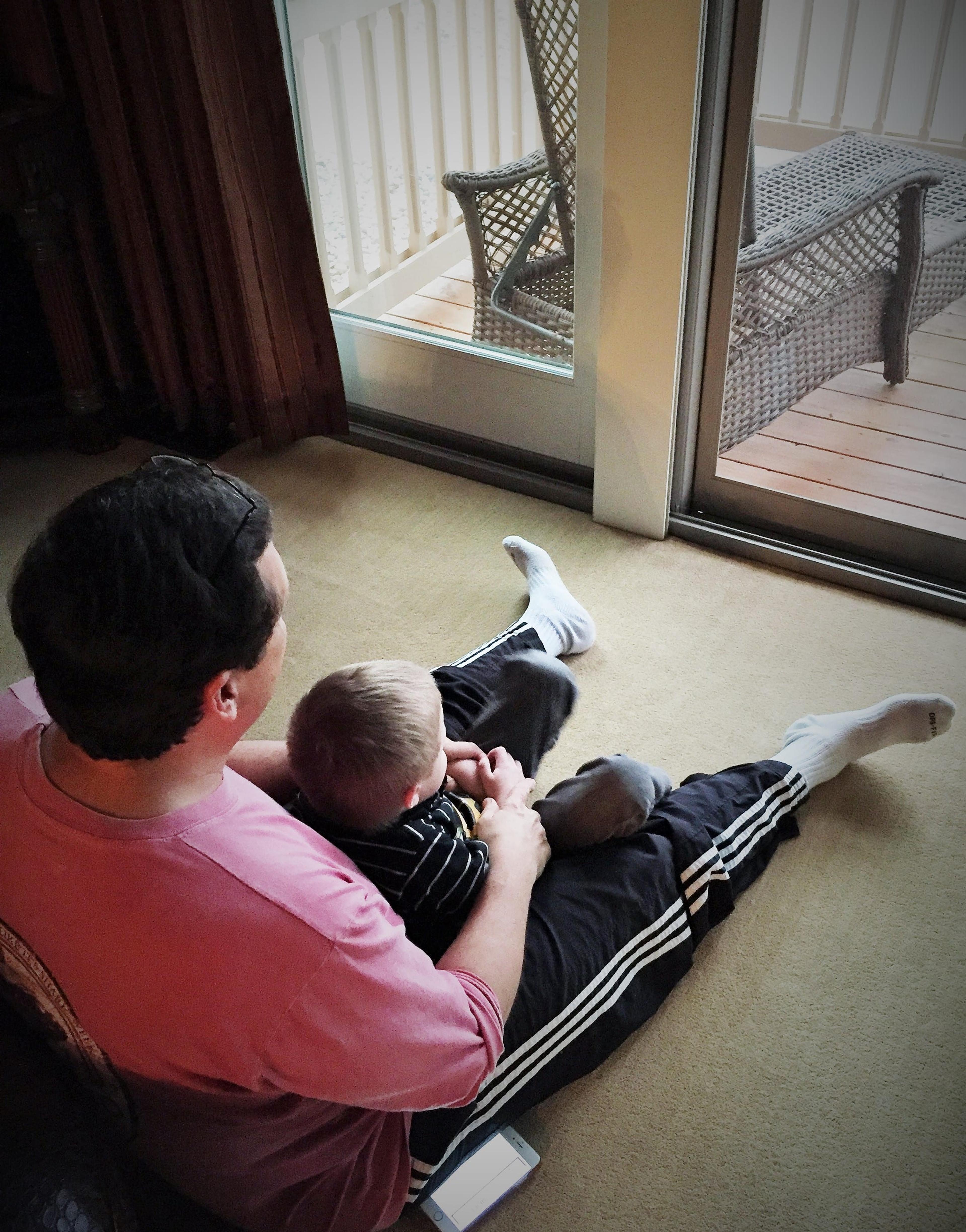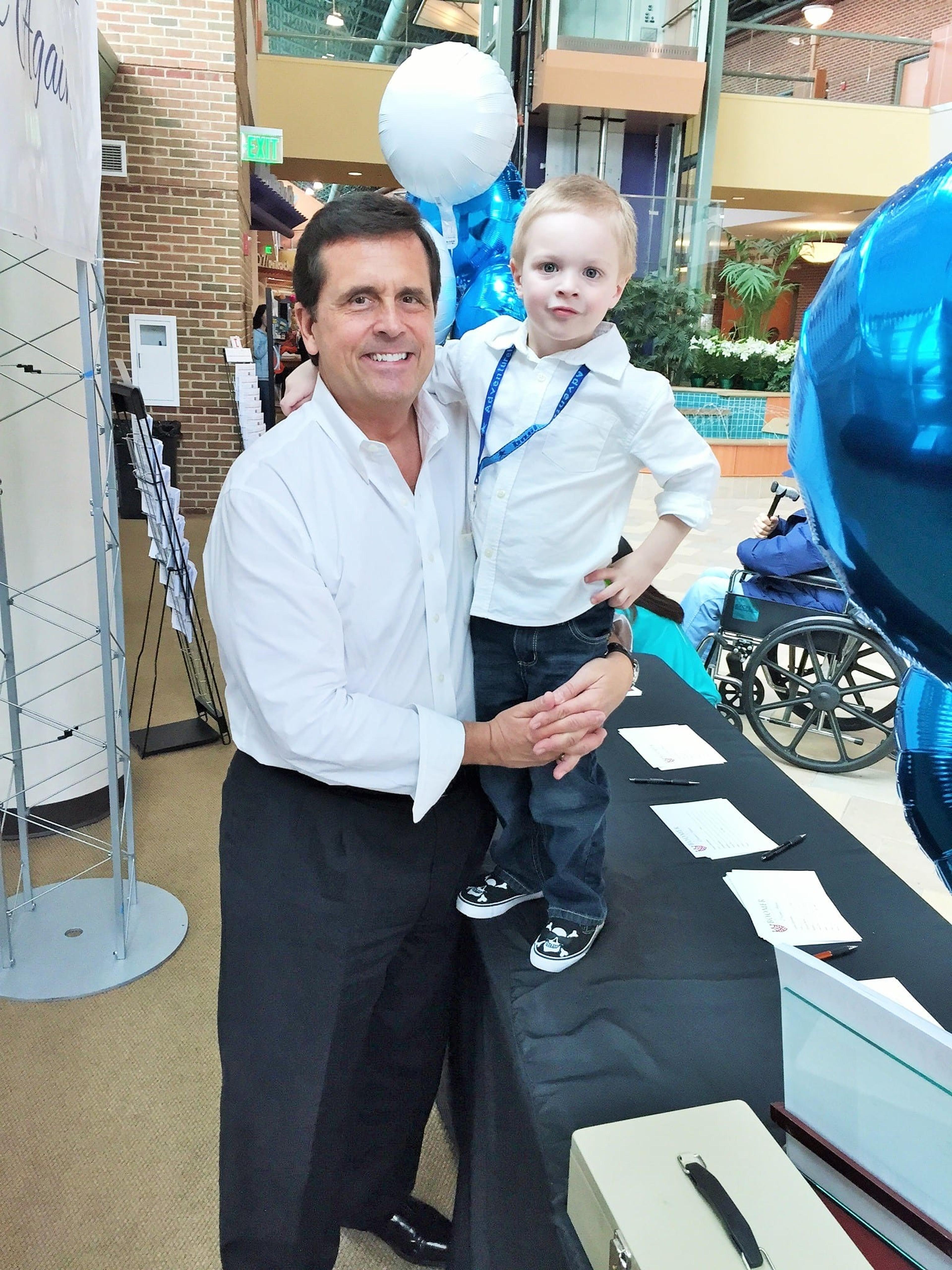Chuck Gaidica: Keeping Kids Calm During Spring Storms

Chuck Gaidica
| 5 min read

Editor’s note: Chuck Gaidica is a paid spokesperson for Blue Cross Blue Shield of Michigan, where he works to have real conversations with local people about matters that affect their health.
As a former TV weather guy I have heard from many parents about the anxiety that comes from approaching storms and related coverage on TV, radio and the web. While this anxiety also affects adults, it is the anxiety in children that I hear the most about.
Storms can be scary to all of us. They are fascinating, too. There are several ways I have found over the years to help move a scared kid to miniature, chief meteorologist.
First, it is helpful for the parents not to show fear during storms. Keeping a TV on for an hour while your favorite weather person tracks storms that won’t affect you directly is not a great idea. Get the facts about your neighborhood and turn the volume down. While it is one thing to stay informed, it is another to have constant weather information that will never affect you blaring as you make dinner. If a parent is anxious and showing fear, this can rub off on the kids in the house. Stay calm. If a tornado warning is issued for your area, feeling a bit panicked is normal. But when typical, spring thunderstorms arrive everybody can keep their cool.
I have found with my five kids and now my grandson that information is king. When kids are really little (under 4-years old) telling them that “God is bowling” as a way to explain thunder may work. But as the kids grow-up you are out of ammunition unless you deal with the storms head on.

Chuck and his grandson watch the weather safely while talking about why storms happen.
My grandson is 4-years old now. We recently sat on the floor of the family room with the sliding door open. An outside deck protected us so rain couldn’t blow in the door. He sat in my lap as we watched the storm clouds increase. I was reminded of my own fascination with storms as kid. I would sit or lay down outside under a covered porch and watch the storms go by the house. When the loud part of the storm gave way to gentle rain I could fall asleep. I had lots of experience with my own children over the years. Now I had my grandson on my lap and we were watching storms. Eventually we could see the rain pick up. At one point I asked him to close his eyes and tell me when the rain started falling harder. His ears, not his eyes, did the work. It gave us a chance to hug as the storm got stronger.
After a few minutes I started my “weather school.” I talked about how the grass, trees and bushes need rain to grow in the spring. I explained why the air gets cooler when a storm arrives. While I could have gone into very scientific information about evaporative cooling, there was no need. He was happy to know that the air gets colder as you go up to the top of a storm and sometimes that air comes down out of the clouds.
We also did some math to help us understand how far away the storms were. We would watch for lightning and then when the sky lit up, we started counting slowly until thunder came. Once we had this number we would divide by five.
Light travels very fast (186,000 miles per second) but the sound of thunder is not moving as fast (1088 feet per second) so you need to do a small calculation. Watch for a lightning strike and start counting slowly until you hear thunder. Once you have your number, let’s say 10-seconds, you divide that number by 5. There are five seconds between when you see the lightning and when you hear the thunder. In my example, the lightning strike would be about 2-miles away. When you say the lightning is only 2-miles away you get a “wow.”
Another nifty idea is to watch the weather radar on TV or your favorite app and help your kids understand where they live on the map. Show them where the storms are now and which way they are moving. Sure they get a geography lesson, but more important they get to see that not all storms are moving at their house. They come to realize that not all storms are bad.
While a 4-year old may not care that lightning cleans the air and also helps create nitrogen to green the lawn a bit, he or she will like learning little facts about storms.
This is a process over time. Next time there is a storm coming, grab your kids, sit down and impress them with your knowledge of storms and how most are not threatening. Knowledge is power and in the case of watching and learning about storms, knowledge can comfort.
What tips do you have for helping kids deal with anxiety during spring storms?

Photo credit: OakleyOriginals Flickr (Main), Chuck Gaidica
If you liked this post, you may want to check out:





